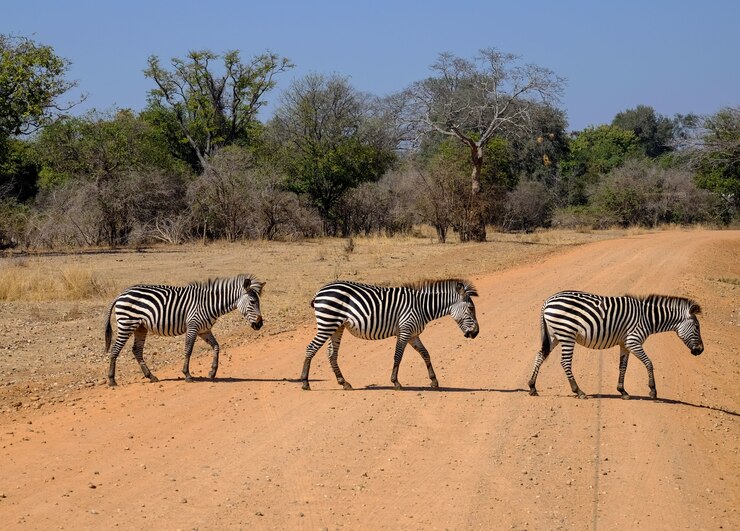Namibia, a country known for its breathtaking landscapes, abundant wildlife, and rich cultural heritage, has emerged as one of Africa’s premier tourism destinations. However, what sets Namibia apart from other countries in the region is its unique approach to tourism and conservation. With its commitment to sustainable tourism practices and conservation efforts, Namibia has become a model for how tourism can play a crucial role in preserving a country’s natural environment while fostering economic growth and community development.
In this article, we explore how Namibia has successfully paired tourism with conservation, examining the strategies that have made it a global leader in sustainable tourism, the benefits of this partnership for the environment, local communities, and the economy, and the challenges it faces as it continues to navigate the delicate balance between economic growth and environmental protection.
1. Namibia’s Rich Natural and Cultural Heritage
Namibia is home to some of Africa’s most iconic landscapes and wildlife. From the towering dunes of the Namib Desert to the rugged mountains of the Skeleton Coast, the country offers a stunning variety of ecosystems that support an incredible array of plant and animal life. Among its most celebrated attractions are the Etosha National Park, the Caprivi Strip, the Namib Desert, and the Zambezi River, each offering unique opportunities for tourists to connect with nature.
The country’s wildlife is equally diverse, including iconic species such as elephants, lions, rhinos, cheetahs, and various species of antelope. Namibia also boasts a significant number of endemic species, making it a hotspot for biodiversity.
In addition to its natural beauty, Namibia’s cultural heritage is equally rich, with numerous indigenous groups, including the Himba, San, Herero, and Nama people, each with their unique customs, traditions, and ways of life. This cultural diversity adds a layer of authenticity to the Namibian experience, offering travelers not just wildlife and landscapes, but also a deep dive into the country’s heritage.
2. Sustainable Tourism: Namibia’s Approach
Sustainable tourism, which focuses on minimizing the negative environmental, social, and economic impacts of tourism while maximizing benefits for local communities, is at the heart of Namibia’s tourism strategy. The country’s approach to tourism is driven by a commitment to conservation and the idea that tourism can be a tool for protecting Namibia’s natural resources and promoting sustainable economic development.
1. Community-Based Natural Resource Management (CBNRM)
One of the key pillars of Namibia’s sustainable tourism model is the Community-Based Natural Resource Management (CBNRM) program, which allows local communities to have a direct stake in the conservation of their natural environment. Through CBNRM, communities are empowered to manage their own natural resources, including wildlife, land, and forests, and are given the opportunity to benefit financially from these resources through tourism and sustainable hunting.
The CBNRM program encourages communities to protect their environment because they directly benefit from its conservation. This has led to the establishment of communal conservancies, where local people collaborate with government agencies, private tourism operators, and conservation organizations to manage wildlife populations and tourism activities.
2. Namibia’s Protected Areas and Conservation Efforts
Namibia is home to a network of protected areas, including national parks, nature reserves, and conservation areas, which cover roughly 20% of the country’s total land area. This is one of the highest percentages in Africa and underscores Namibia’s commitment to preserving its natural heritage. Etosha National Park, one of the largest and most famous wildlife reserves in Africa, is a prime example of the country’s success in conservation. The park is a haven for wildlife, including endangered species such as black rhinos, and attracts tourists from around the world.
Namibia also has a thriving rhino conservation program, which has led to the country becoming a global leader in rhino conservation. The innovative approaches to rhino protection, including 24-hour surveillance and community involvement, have contributed to the resurgence of rhino populations in the country.
Additionally, Namibia has successfully implemented conservation initiatives for endangered species such as cheetahs, wild dogs, and desert-adapted elephants. These efforts have helped secure Namibia’s position as a top destination for eco-tourism enthusiasts and wildlife lovers.
3. Eco-Friendly Accommodations and Low-Impact Tourism
Namibia’s tourism industry has also embraced eco-friendly accommodations, which aim to minimize the environmental impact of tourism. Many lodges and campsites in Namibia operate on sustainable principles, utilizing renewable energy sources like solar power, using locally sourced materials in construction, and employing water and waste management systems that reduce environmental impact.
These accommodations are designed to blend into the natural surroundings, providing guests with a comfortable and immersive experience while preserving the integrity of the land. Additionally, many tourism operators have adopted low-impact tourism practices, such as limiting the number of visitors in sensitive areas, practicing responsible wildlife viewing, and minimizing the use of motorized vehicles in sensitive ecosystems.
4. Carbon Offset Programs and Green Tourism Initiatives
To further reduce the carbon footprint of tourism, many operators in Namibia have introduced carbon offset programs, where tourists can contribute to projects that help mitigate the environmental impact of their travel. These programs support initiatives such as tree planting, renewable energy development, and wildlife conservation projects.
Green tourism initiatives, including promoting sustainable travel practices, have gained traction in Namibia, attracting eco-conscious tourists who seek to minimize their environmental impact while enjoying the country’s natural beauty. This trend aligns with global movements towards responsible travel, where tourists are increasingly looking for ways to support sustainable destinations and conservation efforts.
3. The Benefits of Tourism and Conservation Pairing
Namibia’s unique pairing of tourism and conservation has brought about a wide range of benefits, not only for the environment but also for the local communities and the economy at large.
1. Environmental Benefits
The coupling of tourism and conservation has led to substantial environmental gains in Namibia. By creating economic incentives for conservation, tourism helps fund wildlife protection efforts, habitat restoration, and sustainable land management practices. For example, revenue generated from entrance fees to national parks, wildlife safaris, and eco-tourism activities is reinvested into conservation programs, ensuring that protected areas remain viable and well-managed.
The active involvement of local communities in conservation ensures that the long-term protection of ecosystems becomes a priority, leading to a reduction in poaching, deforestation, and over-exploitation of natural resources. As a result, Namibia’s biodiversity remains rich, with healthy wildlife populations and ecosystems.
2. Economic Benefits
Tourism has become a significant contributor to Namibia’s economy, accounting for approximately 14% of GDP and providing thousands of jobs in the hospitality, transport, and service industries. The partnership between tourism and conservation has made it possible for Namibia to attract high-value tourists, including those seeking wildlife safaris, cultural experiences, and eco-tourism.
Through sustainable tourism practices, Namibia is able to generate income from its natural resources without depleting them, creating a sustainable economic model that benefits both the government and local communities. The revenue from tourism helps fund infrastructure development, education, and health programs, leading to broader socio-economic improvements.
3. Social Benefits
Local communities are among the biggest beneficiaries of Namibia’s tourism and conservation model. Through the CBNRM program and the establishment of conservancies, communities are able to earn income from tourism and sustainable natural resource management. This has led to improvements in living standards, access to education, and the development of local businesses.
Tourism also provides an opportunity for local people to share their cultural heritage with visitors, creating a sense of pride and empowerment. By involving communities in the tourism process, Namibia has fostered a more inclusive and equitable tourism model that benefits everyone, from the people who work in lodges to those who engage in cultural exchanges with visitors.
4. Challenges and the Way Forward
While Namibia’s pairing of tourism and conservation has been largely successful, challenges remain. One of the main concerns is ensuring that the benefits of tourism are distributed equitably and reach the most marginalized communities. Additionally, the rising demand for tourism in popular destinations has the potential to put pressure on fragile ecosystems, especially if growth is not carefully managed.
Climate change also poses a threat to Namibia’s biodiversity, with shifting weather patterns affecting both wildlife and habitats. Addressing these challenges will require continued investment in conservation efforts, innovative tourism models, and the active involvement of local communities.
Namibia’s success in pairing tourism with conservation has made it a shining example of how the two can work hand in hand to create a sustainable future. By embracing responsible tourism practices, empowering local communities, and investing in conservation, Namibia has not only protected its remarkable natural and cultural heritage but also created a thriving industry that benefits its economy and society. As the country continues to innovate and lead by example, it remains a beacon for other nations seeking to balance tourism, conservation, and sustainable development.
Join 'Namibia Today' WhatsApp Channel
Get the breaking news in Namibia — direct to your WhatsApp.
CLICK HERE TO JOIN












